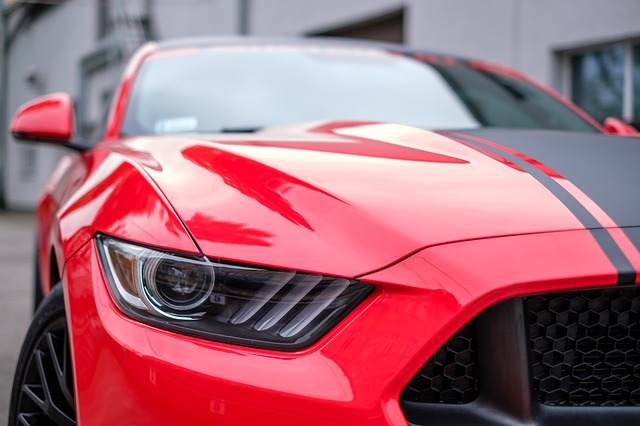Keep your Car Looking New

There are countless advantages to keeping your vehicle clean and protected throughout the year. Preserving the shiny, new look to your paint job is only the beginning, as corrosion on a vehicle’s surface can drastically reduce its resale value. Moisture will quickly dry on a clean vehicle but can accumulate in grimy areas on a dirty car, and that accumulation will lead to corrosion if it’s not taken care of. Your vehicle has more than just rainwater as its enemy. Bird droppings, highway bugs (you know, the kind that are plastered to the front of your vehicle), acid rain, road salt, and atmospheric pollution can all wreak havoc on your once beautiful paint job. Fighting back against these ever-diligent adversaries can seem a daunting task, but really, it’s easier than you’d think.
Your vehicle has more than just rainwater as an enemy. Bird droppings, highway bugs (you know, the kind that are plastered to the front of your vehicle), acid rain, road salt, and atmospheric pollution can all wreak havoc on your once beautiful paint job. Fighting back against these ever-diligent adversaries can seem a daunting task, but really, it’s easier than you’d think.
Ideally, you should wash your car at least once a week, but alas, nothing in life is ideal, and a good washing at least once per month will suffice. The more you wash it, the better your car will look on a daily basis, and the more you’ll be doing to protect it from the harsh conditions of the environment.
To DO list – keep your car looking new
•Park out of the sun. Prolonged exposure to the sun weakens the finish and invites scalloping, peeling, and fading; and it makes the paint more vulnerable to scratching and chipping.
•Rinse off as much dirt as possible before washing.
•Clean wheels to eliminate brake dust and road salt corrosion.
•Don’t place grocery bags, luggage or other objects on the car top or trunk.
•After driving in salty conditions, wash your car to prevent corrosion, fading and rust.
•Get a complete detail once a year.
•Do not “dry wipe” your car as it may cause scratching.
•Avoid gravel roads which can cause chipping .
•Do not park under trees which drip sap.
•Immediately rinse gasoline, oil, antifreeze, transmission fluid and windshield solvent spills off your finish–but do not wipe.
•Have your car inspected by a reputable repair company for any finish imperfections yearly as they may cause rust and corrosion.
•Remove leaves from your car as soon as possible to prevent the release of acid that can permanently stain your finish.
•Avoid brush-style car washes as they cause dirt to scratch the car’s finish.
•Be sure to wash the inside bottom edge of doors, lift gate, hood, and trunk to eliminate the trapped dirt and moisture that can cause premature rusting.
•Never wax your car in direct sunlight to prevent the surface temperature of your car from causing the chemicals in the wax to damage your finish.
•Avoid waxes that promise to remove dirt, oxidized paint or scratches as they are not pure wax and can actually remove paint from your vehicle.
•Do not “polish” light scratches as the clear coat finish can be damaged.
•Mask off all textured moldings and bumper parts before rubbing on wax to avoid discoloring or other damage.
Daily reminders that will keep your car looking new
While loading your vehicle, don’t rest items on the hood, roof, or trunk. It may be a lot easier to scratch your vehicle’s finish than you think just from setting items down. You also risk driving with the item sliding off your car, leaving scrape marks. If possible, set items elsewhere when loading.
Wash your car frequently. Remove road grime and corrosion-causing acid rain deposits with frequent hand washes. Pay special attention to fresh tar and pine sap. Both will over time bake into the finish. For removing tar before you wash, try applying a small amount of cooking oil with a cotton towel, or soft, clean shop rag, or leaving a dab of petroleum jelly on the area for a few hours, then wiping gently away. For tree sap, very gently apply a small amount of mineral spirits before washing.
Avoid automatic car washes. They can damage your car’s finish in several different ways. Harsh, heavy scrubbers can dent panels, and brushes can scour the finish by grinding in grit and grime. So-called “touchless” car washes don’t damage the finish, but they likely won’t get all of the deposits off, leaving them to be baked on by the sun. For keeping salt off in winter, touchless automatic washes and their undercarriage flushes (some more effective than others) are a stop-gap solution, but not a replacement for a good, thorough hand-wash.
If your car is brand new, it comes from the factory with an anti-chip coating applied to the rocker panels and lower section of the doors. If your car doesn’t, some specialized shops can apply a mostly transparent, protective coating to the lower section of your doors that will also help prevent rust.
Also, if the side molding doesn’t already stop passengers from opening doors into building walls, other vehicles, or signposts, consider installing the special plastic stripping around the edges of your doors. It’s not pretty but its function is irrefutable and it will keep your car prettier in the long run.
It is best to fix damage or rust promptly. Chips or scrapes, no matter how minor, make your finish much more susceptible to rust. If you find rust or chips, contact your local Body Shop right away!
You must be logged in to post a comment.

+ There are no comments
Add yours